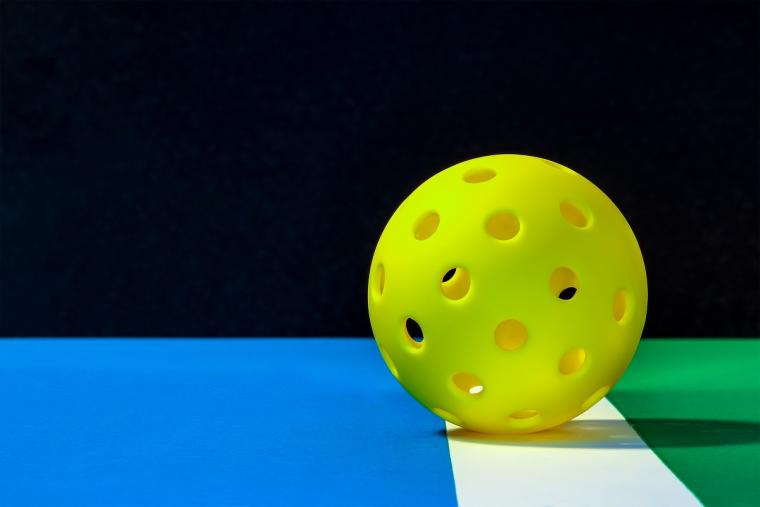
Pickleball may be the fastest-growing sport in the United States, but now it’s also bouncing into the lives of more younger players than ever before. In fact, at the most recent Minto US OPEN Pickleball Championships held in Naples, Florida, the players ranged from a high of 88 to a low of nine.
The Association of Pickleball Professionals (APP) recently released its latest research indicating that 48.3 million American adults — nearly one-fifth of the total adult population — have played the sport at least once in the past 12 months. That’s a 35% percent increase since August 2022, when the APP reported 36.5 million players.
Even more mind-blowing, though, is news that the average age of pickleball players is 34.8 years old — considerably younger than previously assumed and highlighting the growth of the game, especially among people between 18 and 44.
“The APP’s latest research proves that the rapid growth of pickleball continues unabated,” Tom Webb, the association’s chief marketing officer, said in a statement. “We revealed in January just how fast participation numbers have increased in the last two years, and … we now are able to answer the question, ‘Who is playing pickleball?’ Those people are younger than anyone thought, and there are many more people playing pickleball than has ever been seen before.”
 Indeed, more than 70% of avid pickleball players are between the ages of 18 and 44, according to the APP, while 40% are between 25 and 34, and 18% are between 18 and 24. Additionally, the number of players between 35 and 44 has increased by a whopping 86% since August 2022. And while “avid” players are male (62%), the gender breakdown among casual players is 57% male and 43% female.
Indeed, more than 70% of avid pickleball players are between the ages of 18 and 44, according to the APP, while 40% are between 25 and 34, and 18% are between 18 and 24. Additionally, the number of players between 35 and 44 has increased by a whopping 86% since August 2022. And while “avid” players are male (62%), the gender breakdown among casual players is 57% male and 43% female.
Where Are All the Pickleball Players?
The top 10 designated market areas (DMAs) account for 45% of all pickleball participation, according to the APP, with New York City and Los Angeles collectively comprising more than 21%.
Here’s a breakdown of the top DMAs for pickleball participation:
1. New York: 11.3% of the DMA population has played pickleball at least once in the past 12 months (5.5 million)
2. Los Angeles: 9.6% of the DMA population (4.7 million)
3. Dallas-Fort Worth: 5.2% of the DMA population (2.5 million)
4. Miami-Fort Lauderdale: 3.1% of the DMA population (1.5 million)
5. San Francisco-Oakland-San Jose: 2.9% of the DMA population (1.4 million)
6. Washington, D.C.: 2.9% of the DMA population (1.4 million)
7. Houston: 2.5% of the DMA population (1.2 million)
8. Chicago: 2.5% of the DMA population (1.2 million)
9. Atlanta: 2.3% of the DMA population (1.1 million)
10. Seattle-Tacoma: 2.2% of the DMA population (1.1 million)
Here are some stats from the Minto US OPEN Pickleball Championship (the largest event in pickleball history) for good measure:
- 5,155 Matches
- 3,039 Players (149 International Players)
- 297 Pros
- 2,742 Amateurs
- 20 countries
- 50 states
- Youngest player 9
- Oldest player 88
“Over the past few years, we have seen this sport spread at an unprecedented rate — from recreational play in driveways, schools and clubs, to competitive leagues and tournaments, to the elite players at the professional level,” Webb said. “That growth has brought a remarkable influx of players nationwide: They are younger, more diverse and can be found in more places than anyone ever thought. Every day we hear stories across the nation of a new pickleball facility breaking ground, courts being built, and local communities gathering together to take part in the sport for the first time — and falling in love with pickleball.”
Despite the sport’s rapid growth and increasing popularity across generations and gender, however, residents in some communities don’t relish the idea of pickleball courts in their neighborhoods. In Denver, for example, neighbors complained about the noise levels generated by the pop-pop-popping of hard plastic balls meeting carbon fiber paddles — prompting Denver Parks & Recreation to discontinue play at one city park and abandon plans to build a new court at another park.
As KUSA-TV reports, “an inspector found sound levels relating to pickleball at over 70 decibels in some residential locations near the [existing] court, according to records obtained by 9NEWS. City ordinance only allows for 55 decibels.”
“Clearly at these homes along this site….it is violating the noise ordinance,” Denver Parks & Recreation Deputy Director Scott Gilmore told the television station.
“I really love the idea of pickleball and people getting together and having fun and creating community, but it’s very hard to live near it,” said Betsy Rumely, one of the neighborhood residents. “I wish there were more things where people would get together and have fun and create community. It’s just this is the wrong place for it.”
Gilmore is intent on finding the right place and plans to form a Pickleball Advisory Committee, according to KUSA-TV, comprised of players and neighbors near courts to work through potential problems going forward.

